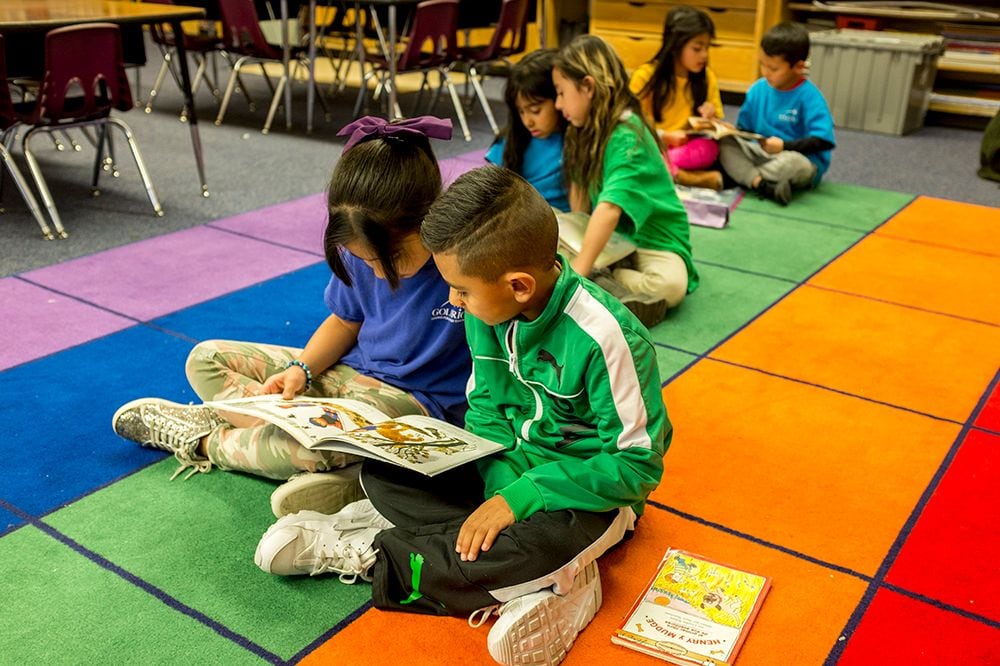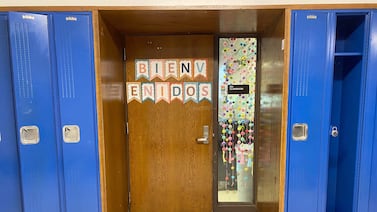Denver should scrap its own school rating system, and instead pair the state’s ratings with additional information to give families a more nuanced picture of the district’s schools.
That’s the recommendation of a committee tasked with reimagining Denver’s “school performance framework,” which gives each school a single color-coded rating largely based on state standardized test scores. Low-rated schools get extra scrutiny and funding from the district, but have in the past been closed by the school board.
The new system would represent another shift away from Denver’s previous approach to school improvement. Proponents have supported ratings based on test scores as a way to identify struggling schools and provide important information to families as they choose schools. But backlash has grown from teachers and others who argue that test scores say more about a school’s demographics than the quality of instruction happening within its walls.
Denver Public Schools is currently collecting public feedback on the committee’s recommendations, and the school board is slated to vote on them next month.
Federal law requires states to rate schools based on students’ academic performance. Colorado has its own school performance framework that, like Denver’s, is largely based on state math and literacy test scores. Every district but Denver Public Schools already uses the state framework, and the 30-person committee is recommending Denver use it, too.
In addition, the committee recommends that Denver collect and share a trove of other information about each of its schools’ academics, culture, and student well-being.
“To date, schools have been narrowed to a single ‘color’ as the primary way of communicating their value to stakeholders,” the committee wrote in a 21-page report. While the state rating will still meet requirements for a summative school score, the other information “will provide parents and the broader community with a more accurate picture of each school.”
The information could include measures such as average class sizes, the reliability of a school’s buses, or the ratio of mental health staff to students. The data in a school’s “dashboard” would not be combined into a rating, but rather be used to provide context for the state ratings.
The district would use the state ratings to determine when and how to intervene in struggling schools. The State Board of Education uses state ratings in the same way.
Using the state’s ratings would save Denver money and provide “clarity and consistency” for families, the committee wrote. The two systems, though both based on test scores, sometimes generate different ratings for the same school, causing confusion and contention.
Combining the ratings with the dashboard represents a desire to move away from standardized test scores as the ultimate measure of school quality.
“We believe it is important to connect what is happening in the school to how it is happening,” the committee wrote in its report. “A student may have above-average academic scores on standardized tests, but they may have significant trauma over the experience of learning if the climate and culture of where they did the learning at school was challenging.”
A political shift on the school board has caused Denver to move from closing or replacing struggling schools to requiring them to submit plans for improvement. Another, more amorphous recommendation by the committee talks about using data not to indict schools as failing but as part of “a continuous improvement learning cycle” to diagnose schools’ strengths and weaknesses, flag potential problems, and put in place strategies to fix them.
The committee began meeting in August and finalized its recommendations last week. Its members held a variety of viewpoints, and the report notes its decisions were not unanimous.
Saying it was too difficult for the public to participate due to the effects of the coronavirus, parents with the advocacy organization Stand for Children implored the district to pause the committee’s work. But the committee continued to meet virtually.
The district is using an online form to collect public feedback on the recommendations this week and next week. On May 14, the committee is slated to present the recommendations to the school board, which will hold a special public comment session about them on May 18. The seven-member board is expected to vote on the recommendations on June 11.








